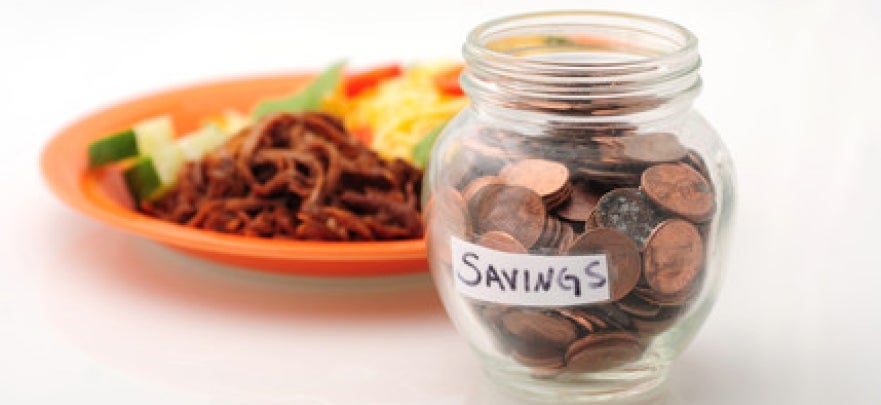Meal Planning on a Budget
Meal planning can already be challenging. Now add eating healthy and shopping on a budget. Although that can seem pretty daunting, don’t fret, there is a way to accomplish your goals to plan, prep, eat healthy and stay within your budget.
There are many ways to plan and prepare how to shop for what you need or may want. Keep in mind that compromise and finding alternatives is key. Here are some ideas that will help ease your mind and get you started.
1. Tis the season:
Buying fresh produce while it’s in season is usually less expensive. So find what you like, stock up when you find a good sale and freeze it. Summer time is generally when most produce is in season so stalking up on sale items will provide you with fruits and veggies for several months.
2. Plan your meals according to what’s on sale:
Sign up for your local grocery store savings card and watch for what’s on sale. Consider planning your meals around what’s on sale as opposed to planning your meals ahead of time and possibly buying groceries that are not sale. If prepping is not something you enjoy, buy frozen veggies. Often times they can be found for as little as $1 per bag when purchased in quantity.
3. Try less expensive cuts of meat:
Even on a tight budget you can still enjoy meat. Shop for less expensive cuts of meat, like chicken legs and thighs instead of chicken breast. Using a slow cooker as an alternative method of cooking can make tougher types of meat tender.
Being a meat-eater you have many cheaper cuts to choose from such as; bone-in, skin-on, tougher cuts of red meat, and organ meats. These are much cheaper and more flavorful compared to boneless skinless chicken breasts.
The Crock-pot is amazing for taking cheaper cuts of meat like pork shoulder and chuck roast and making them tender without drying them out.
4. Embrace the bean... and whole grains:
Beans and whole grains like quinoa and brown rice can be an inexpensive and delicious way to bulk up meals. They can even be a meal on their own.
Black beans are a great additive to bulk up a meat dish. For example, spending $15 will get the ingredients to make chili that will last for one person up to 10 meals. You can also add cooked black beans to ground meat. This will bulk up the meat and yield more patties, say for burgers.
If you find these items on sale, you can pre-cook them and freeze single serving portions for quick simple use in soups or salads. The whole grains will also keep you full longer.
5. Plan and prep meals ahead:
Whether it’s tomorrow’s breakfast, lunches for work or veggies for the week, prepping food in advance is a major step in the right direction towards a healthy eating lifestyle. Spend some time every weekend planning your meals for the week. If you don’t mind eating leftovers and eating the same thing several times, meal prepping becomes much simpler. Try cooking two large meals on a Sunday night, pack them up in portable containers, and you’re set for lunch and dinner all week by just one night of cooking. This is a great way to save time and money!
6. Learn to cook different foods:
Ethnic cuisines like Mexican and Indian rely on inexpensive ingredients, like beans and rice.
If you’re not a fan of these types of food, learn to like them. These foods offer the best value with loads of flavor. Keeping it on the cheap with these meals, rice is a staple, which is cheap. Both are not meat heavy, which is cheap. Both also allow a lot of ingredients to be used interchangeably. Less waste equals cheap.
7. Organize your fridge and pantry:
Leftovers are great, but if they get lost in the back of the fridge what good do they serve. Label your food and leftovers with dates to keep organized and minimize food waste.
Know what foods you have on hand will help ensure it gets eaten and not wasted which saves also saves money. Another tip when packaging food for freezing; prepare packages in the amount of food you are going to use.
8. Repurpose/Reinvent the leftover:
If you don’t like eating the same meal over and over, consider repurposing leftovers into an entirely new and delicious meal. Things that you can make into a sandwich later work well; chicken, meatballs, meatloaf or roast beef. When whole chickens are on sale buy two and cook them both. The first night is roast chicken and then you can make sandwiches, soup or throw some in fried rice. A couple of chickens can go a long way.
9. Hit the farmer’s market at the end of the day:
The farmer’s market may or may not save you money during regular hours, think about visiting the market at the end of the day, when you could very likely score some great deals. You can get some very good deals on produce that way, since the vendors want to unload as much as possible before they close for the day.
10. Ethnic markets can save you money.
Think about checking out local ethnic markets. You may not only find yourself some great bargains, but also stumble across some new interesting ingredients to try.
You can buy really varied, interesting, cheap noodles in an Asian market. Many of these noodles are overpriced in the supermarket. The same goes for just about any condiments, sauces and even meats. Ethnic markets have good selections of fresh meats and fish for a lot less then the traditional supermarkets.






